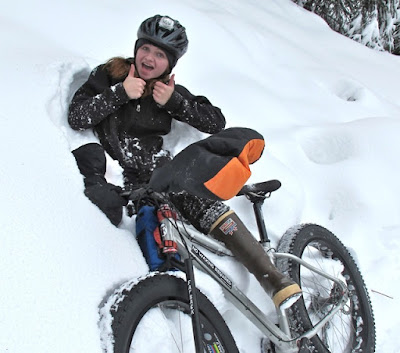Thanks to Hannah, who talked me into this escapade, we were at the first Big Fat Bike Festival, and local riders were thanking us for making the four-and-a-half-hour trip from Anchorage. They were pleased with the response from out-of-towners. At least 40 people had registered for an event put together by a town where, according to one local, snow biking is exploding: She told us there are about fifteen fat bikes in Homer this winter!
Grassroots bike events are the best kind, and this was definitely grassroots. Fun and simple, but well organized.
Fat-bikers on the move
On Saturday morning, 40 bikes and riders were hauled to Anchor Point, where we started a rolling fat-bike party along a 16-mile beach route back to Homer. With sand and saltwater, it was bike abuse for a good cause – fun.
There were fat bikes with panniers and homemade fenders, and riders wearing Xtra-Tufs and backpacks. We rode on the beach at low tide, over and through fields of boulders, and past otters, sea lions and bald eagles. Best of all, nobody was in a hurry. Not anyone within sight of me, anyway. People were just riding because it was a damn good time.
 Bumper sticker of the year. (An unofficial
Bumper sticker of the year. (An unofficial
contribution by Carl from Seward.)
Congrats to the Homer Cycling Club for a successful event. Saturday night’s dinner and prize raffles were a hoot, too.
The Big Fat Bike Festival will be on my winter schedule again.













